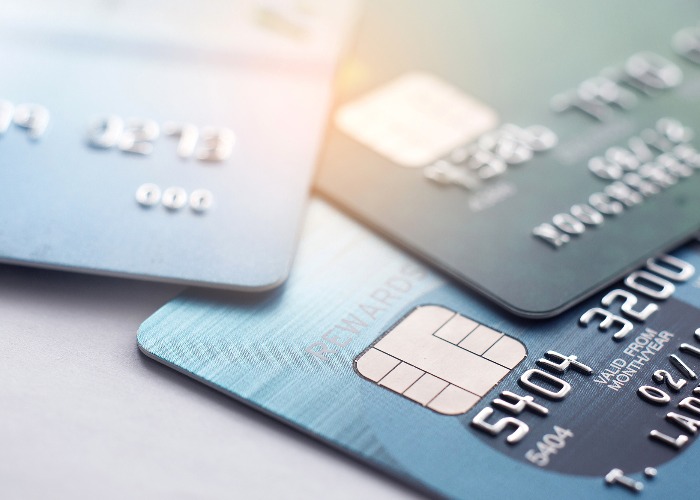How to spread the cost of a big purchase

If you’re planning on making a large purchase but you don’t have enough in your savings to pay for it in one go, there are other options.
It can be frustrating when you need to buy something necessary and expensive, but you don’t have quite enough cash in your savings to pay for it.
We reveal the many ways that you can spread the cost of a big spend, including using a 0% purchase credit card or a personal loan.
0% purchase credit card
If you’re planning on making a large purchase and play your cards right, you could effectively have an interest-free loan for two years or more.
A 0% purchase credit card allows you to spend up to your limit without paying interest on it for a set period of time.
But you need to make the minimum monthly payments and pay off your balance at the end of the interest-free period.
Some cards, like the Sainsbury’s Bank Dual Offer Credit Card, offer up to 27 months interest-free credit. If you’re eligible, you can have what amounts to an interest-free loan for over two years.
But watch out, as some credit card providers may charge you a fee for the privilege.
Also, if you fail to make the monthly minimum payments or don’t pay off your balance before the interest-free period ends, you could face hefty interest charges of around 20% APR.
The best 0% purchase credit cards
If you aren’t able to pay off the balance once the 0% interest period ends, you should consider transferring the balance to a 0% balance transfer card.
This will allow you to move your existing balance from one card to another, giving you an extension on your interest-free period.
But don’t forget, you will have to pay off the debt eventually – or face soaring interest rates.
The best low-fee and fee-free 0% balance transfer credit cards
Personal loan
Another option to help finance a large purchase is to consider a personal loan.
A personal loan allows you to borrow more money than you may be able to with a credit card – and the larger the amount you borrow, the lower the interest rate tends to be.
You can choose how much money you’d like to borrow and over what time period you intend to repay the loan.
Once that’s been decided, monthly repayments and interest rates are usually fixed, meaning you’ll know exactly what you need to pay each month, which makes it easier to budget.
But if the interest rate on your loan is flexible, you may pay less one month and more the next, depending on fluctuations in interest rates.
A personal loan may also be subject to an arrangement fee, so make sure you take this into consideration when working how much the loan repayments will be.
As with all loans and credit cards, it’s a good idea to shop around for the best deal that suits your needs before you sign up.
Compare personal loans at the loveMONEY comparison centre
Don’t forget that you get a 14-day cooling off period, just in case you change your mind.
If you’re considering a personal loan, the Money Advice Service’s loans calculator is useful for working out how much a loan will cost you or how long it will take you to pay off.

Hire purchase agreement
A hire purchase (HP) agreement is another form of borrowing that allows you to spread the cost of a large purchase, although it’s usually offered when you buy a car or furniture.
Unlike other forms of borrowing, you won’t actually own the goods you’re buying until you’ve made the final payment.
You may be required to pay a deposit to qualify for a HP agreement and you then have to pay off the balance in monthly instalments over an agreed period of time.
You may be offered competitive rates of interest, but the downside is you will end up paying more for whatever you buy compared to if you bought it outright.
And if you fail to keep up with repayments, your purchase could be repossessed.
As with any form of borrowing, make sure you shop around for the most competitive deal.
Borrowing from friends and family
If you’re unable to get credit from a bank or credit card company, a family member or friend may be willing to help you finance your purchase of that big-ticket item.
There are many positives to borrowing money from a friend or family member. They may be able to give you credit when you might otherwise be unable to get it.
The loan may well be interest-free. If it isn’t, then the interest rate will probably be at a more favourable rate compared to any bank or building society.
On top of that, the arrangement will probably be more flexible than a traditional loan in terms of minimum repayments and length of the loan.
But while the offer of an ‘interest-free’ loan from a friend is a tempting, you should think carefully about it.
For example, could your friendship go the distance if you can’t pay the money back?
It’s a good idea to set out in writing some ground rules about how and when the money is going to be repaid and whether the loan is interest free to avoid any frosty meetups further down the line.
If you’re looking for advice on how to borrow money from friends and family, check out our guide.
Similar to any loan, if you’re not sure how you’re going to pay the money back, perhaps you should avoid borrowing it in the first place.
Comments
Be the first to comment
Do you want to comment on this article? You need to be signed in for this feature